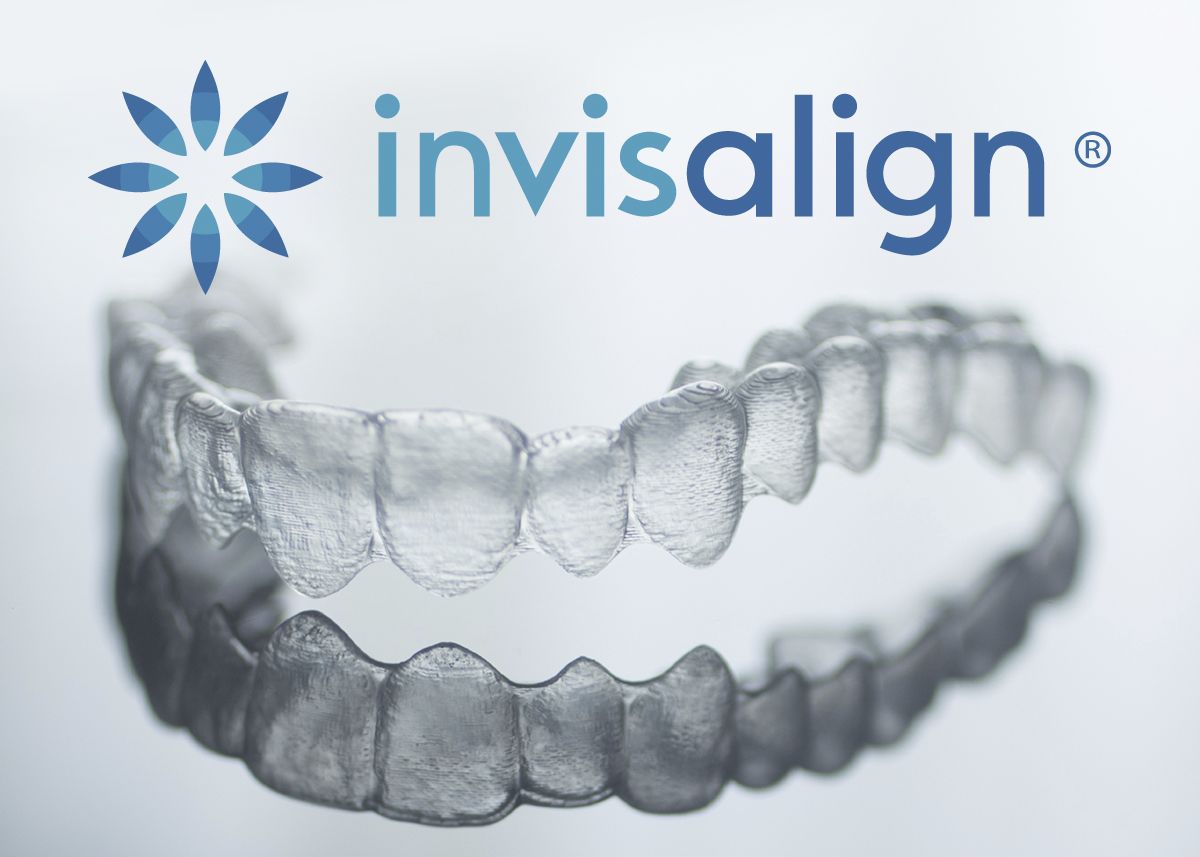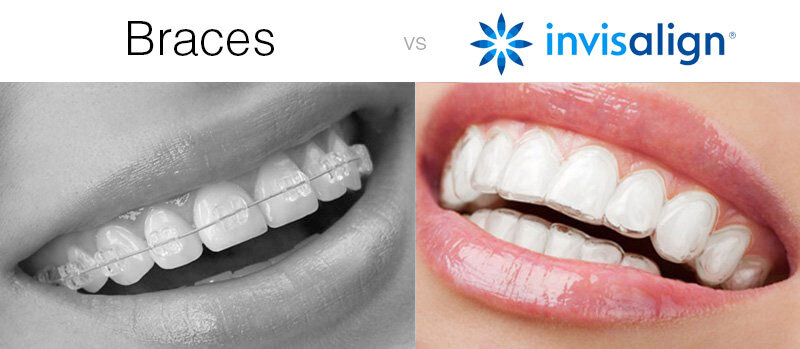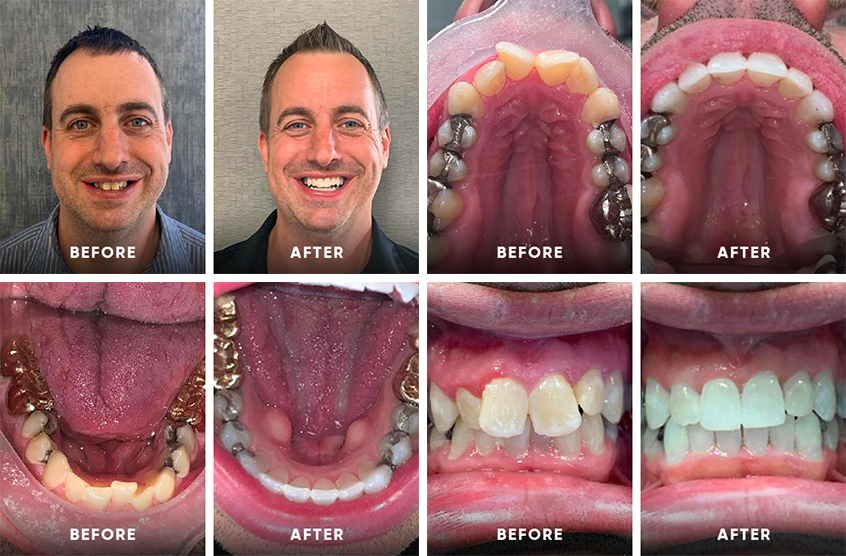Discover the Advantages of Invisalign for a Perfect Smile Change
Discover the Advantages of Invisalign for a Perfect Smile Change
Blog Article
Invisalign vs. Standard Braces: Which Alternative Is Right for You?
When considering orthodontic treatment, the selection between Invisalign and standard dental braces provides several vital aspects that merit cautious evaluation. Invisalign uses a discreet option with detachable aligners, while conventional dental braces supply a much more visible yet reliable solution for severe misalignment.
Overview of Treatment Options

On the other hand, typical braces consist of metal braces and wires that are adhered to the teeth. This technique applies continual pressure over time to attain positioning. While reliable for intricate orthodontic issues, standard braces need regular brows through for modifications and can present obstacles in preserving oral hygiene due to the difficulty of cleaning up around wires and brackets.
Both choices have their merits, and the choice typically depends upon certain oral problems, way of life choices, and individual conformity. Eventually, consulting an orthodontic professional is important for establishing one of the most suitable therapy strategy customized to specific requirements. Recognizing the subtleties of each alternative can significantly influence the overall success of orthodontic treatment.
Visual Considerations
A considerable aspect affecting the choice in between Invisalign and standard braces is the visual allure each therapy supplies. Invisalign aligners are crafted from clear plastic, making them basically unseen when used. This discreet appearance is particularly appealing to adults and young adults that may feel self-conscious concerning their orthodontic therapy. The capability to maintain an all-natural smile throughout the placement process can substantially enhance the patient's self-confidence in expert and social setups.
In comparison, traditional dental braces contain metal brackets and wires, which can be more obvious. While improvements in orthodontic modern technology have caused the development of smaller brackets and tinted elastics, traditional braces still preserve a more conspicuous profile. For some people, the presence of dental braces may discourage them from looking for essential treatment.
Ultimately, the option in between Invisalign and typical braces may hinge on individual choices concerning visual appeals. Individuals that focus on discernment often lean toward Invisalign, while those who are less concerned regarding exposure might go with typical dental braces. Recognizing the visual effects of each alternative is crucial for making an informed decision that aligns with one's way of living and choices.
Comfort and Convenience

In terms of comfort, Invisalign aligners are detachable, enabling people to enjoy their favorite foods without limitation and preserve optimum dental health. Cleaning and flossing are streamlined, as the aligners can be secured throughout these routines, whereas conventional braces require careful steering around cables and brackets.
In contrast, conventional braces require normal modifications, making them much less practical for those with busy timetables. Generally, the comfort and convenience of Invisalign make it an enticing choice for several individuals looking for orthodontic therapy.
Treatment Period and Efficiency
While both Invisalign and traditional Get the facts dental braces work in dealing with dental imbalances, the period of therapy can differ dramatically between both choices. Generally, Invisalign therapy can take anywhere from 12 to 18 months, depending on the intricacy of the instance. The clear aligners work by slowly changing teeth right into their desired settings, and normal follow-ups with an orthodontist assistance make certain progress stays on track.
On the other hand, traditional dental braces typically require a longer dedication, usually varying from 18 months to 3 years. This results from their fixed nature and making use of cords and brackets, which can be extra efficient for complicated situations and serious misalignments (Invisalign). The treatment efficiency of standard dental braces is well-documented, as they permit exact changes and better control over tooth activity
Inevitably, the selection in between Invisalign and standard braces may rest on both the awaited therapy period and the certain dental problems at hand. Consulting with an orthodontist is vital, as they can supply customized suggestions based on individual demands, ensuring the picked approach lines up with preferred timeframes and outcomes.
Cost Contrast and Insurance Policy Alternatives
Price plays a substantial role in the decision-making procedure for people thinking about orthodontic treatment, whether selecting Invisalign or conventional dental braces. Usually, the expense of Invisalign ranges from $3,000 to $8,000, while standard braces typically set you back between $2,000 and $6,000. Factors affecting these costs consist of the complexity of the instance, the duration of therapy, and geographical location.
Insurance policy coverage can dramatically affect out-of-pocket expenses. Lots of dental insurance policy plans supply partial coverage for orthodontic therapies, however the specifics can differ widely. It is essential for patients to assess their insurance plans to determine the degree of insurance coverage for either choice. Usually, traditional braces might be more often covered by insurance policy plans compared to Invisalign, which some insurers categorize as a cosmetic treatment.
In addition, numerous orthodontic techniques supply flexible layaway plan, making both treatment options much more easily accessible. People need to ask about potential financing options and discount rates for in advance repayments. Examining the complete price, consisting of insurance policy advantages and settlement strategies, is essential for making an informed decision that aligns with both visual choices and spending plan factors to consider.

Verdict
In recap, the option between Invisalign and conventional braces pivots on several variables, including visual preferences, convenience, therapy period, and cost. Invisalign supplies a discreet, detachable choice that promotes oral health and dietary adaptability, while Get the facts conventional dental braces might be preferable for complicated oral issues and usually come at a reduced rate point. Eventually, assessment with an orthodontist is important to evaluate specific circumstances and figure out one of the most Continued appropriate treatment alternative for achieving ideal oral placement.
When thinking about orthodontic therapy, the choice between Invisalign and standard dental braces presents several crucial aspects that warrant mindful analysis.Contrasting Invisalign and typical braces reveals distinctive treatment choices for orthodontic modification.While both Invisalign and typical braces are efficient in remedying oral misalignments, the duration of therapy can differ substantially between the 2 choices.Expense plays a significant role in the decision-making process for individuals taking into consideration orthodontic therapy, whether deciding for Invisalign or traditional dental braces.In recap, the option between Invisalign and conventional braces pivots on numerous aspects, including aesthetic choices, convenience, treatment duration, and price.
Report this page